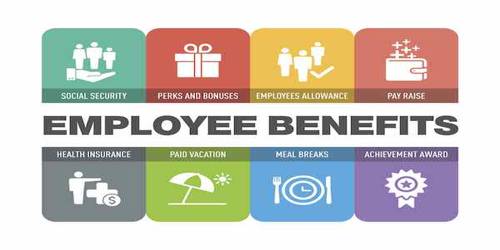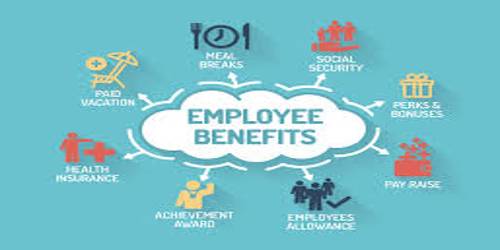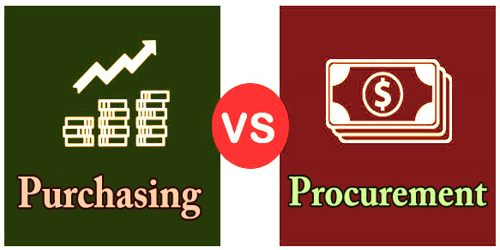Employee benefits typically refer to retirement plans, health life insurance, life insurance, disability insurance, vacation, employee stock ownership plans, etc. This benefits in kind (also called fringe benefits, perquisites, or perks) include various types of non-wage compensation provided to employees in addition to their normal wages or salaries. Benefits are increasingly expensive for businesses to provide to employees, so the range and options of benefits are changing rapidly to include, for example, flexible benefit plans.
Benefits are any perks offered to employees in addition to salary. Benefits are forms of value, other than payment, that is provided to the employee in return for their contribution to the organization, that is, for doing their job. Some benefits, such as unemployment and worker’s compensation, are federally required. (Worker’s compensation is really a worker’s right, rather than a benefit.) The most common benefits are medical, disability, and life insurance; retirement benefits; paid time off; and fringe benefits.

Prominent examples of benefits are insurance (medical, life, dental, disability, unemployment and worker’s compensation), vacation pay, holiday pay, and maternity leave, contribution to retirement (pension pay), profit sharing, stock options, and bonuses. (Some people would consider profit sharing, stock options and bonuses as forms of compensation.)
Employees and employers acknowledge the importance of salaries and health benefits to employee loyalty. You might think of benefits as being tangible or intangible. The benefits listed previously are tangible benefits. Intangible benefits are less direct, for example, appreciation from a boss, likelihood for promotion, nice office, etc. People sometimes talk of fringe benefits, usually referring to tangible benefits, but sometimes meaning both kinds of benefits.
You might also think of benefits as company-paid and employee-paid. While the company usually pays for most types of benefits (holiday pay, vacation pay, etc.), some benefits, such as medical insurance, are often paid, at least in part, by employees because of the high costs of medical insurance.
Information Source:
















